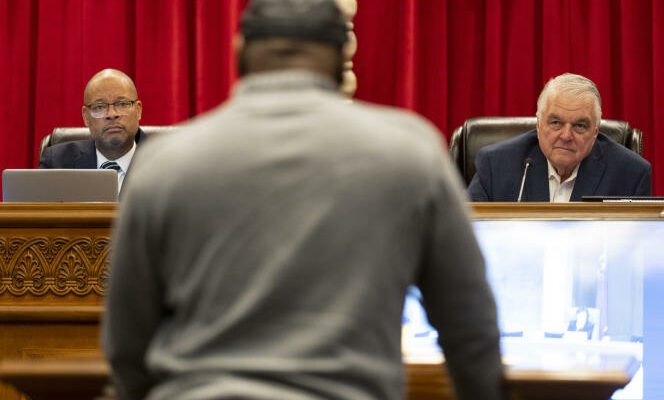For more than twenty years, the death penalty has been on the decline in the United States. The year 2022 confirmed the trend: eighteen executions were recorded, the lowest number since 1991, excluding the two pandemic years (seventeen in 2020 and eleven in 2021).
For the eighth consecutive year, less than thirty people were executed there, against 98 in 1999, the record year, indicates the Death Penalty Information Center (DPIC), the reference organization on the matter in its annual report. Only six states (of the twenty-seven where capital punishment is legal) carried out executions: Texas and Oklahoma (five each), Arizona (three), Missouri and Alabama (two each). , as well as Mississippi (a).
Death sentences are also on the decline. Despite the security escalations that marked the campaign for the midterms elections in November 2022, the use of the death penalty has not progressed, notes the DPIC. In 2022, American juries handed down twenty death sentences, the lowest number ever recorded (non-pandemic). The “record” dates from 1998, with 295 convictions.
Supporters of abolition, however, are careful not to show off: 2022 will remain as “the year of botched executions”, deplores the DPIC. Out of twenty planned killings, seven – more than a third – were marked by incidents that probably caused additional suffering to the condemned person. In question: the incompetence of the auxiliaries in charge of the execution and the faulty or badly implemented protocols. “As support for the death penalty declines, we are seeing increasingly extreme and irresponsible behavior from states that want to implement it”explained to New York Times DPIC director Robert Dunham.
A “carnage”
The emblematic figure of these “botched executions” (“botched executions”) will remain that of Joe Nathan James, 50, convicted in 1999 in Alabama for the murder of a former companion. On July 28, the inmate endured the longest execution since capital punishment resumed in the United States in 1976. It took Atmore prison staff three hours to successfully insert the IV allowing the cocktail of lethal substances to be injected.
The execution began at 6 p.m. and was not declared complete until 9:27 p.m. When witnesses and reporters were allowed into the observation room at 9 p.m., the condemned man was unconscious and he had uttered none of the last words which those who are about to die are invited to deliver. An autopsy carried out by the NGO Reprieve showed perforated veins, lacerations in the arms, probably the result of the work of unqualified personnel. One “carnage “, according to the expression of the magazine The Atlantic.
You have 63.92% of this article left to read. The following is for subscribers only.
